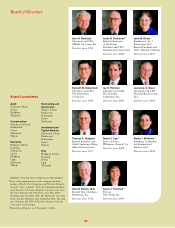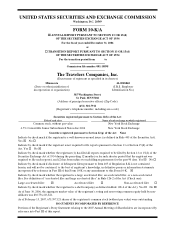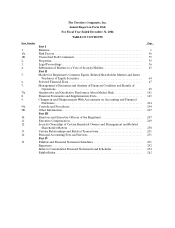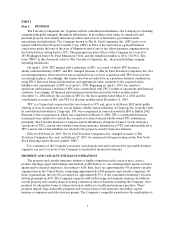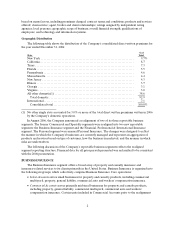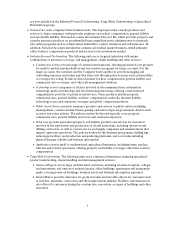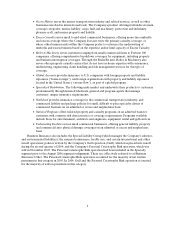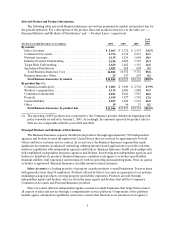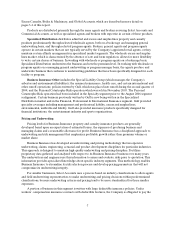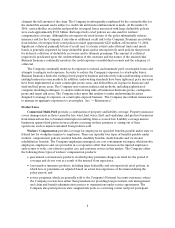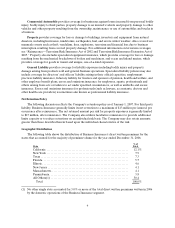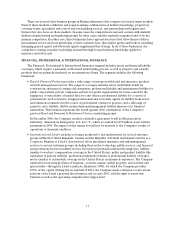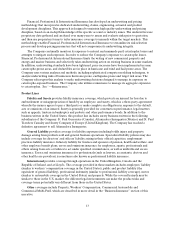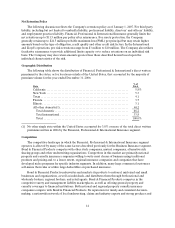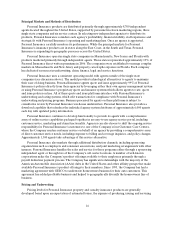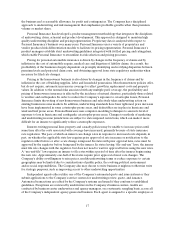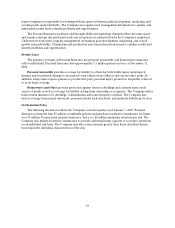Travelers 2006 Annual Report Download - page 20
Download and view the complete annual report
Please find page 20 of the 2006 Travelers annual report below. You can navigate through the pages in the report by either clicking on the pages listed below, or by using the keyword search tool below to find specific information within the annual report.8
claimant the full amount of the claim. The Company is subsequently reimbursed by the contractholder for
the deductible amount and is subject to credit risk until such reimbursement is made. At December 31,
2006, contractholder receivables and payables on unpaid losses associated with large deductible policies
were each approximately $5.01 billion. Retrospectively rated policies are also used for workers’
compensation coverage. Although the retrospectively rated feature of the policy substantially reduces
insurance risk for the Company, it introduces additional credit risk to the Company. Premium receivables
from holders of retrospectively rated policies totaled approximately $223 million at December 31, 2006.
Significant collateral, primarily letters of credit and, to a lesser extent cash collateral trusts and surety
bonds, is generally requested for large deductible plans and/or retrospectively rated policies that provide
for deferred collection of deductible recoveries and/or ultimate premiums. The amount of collateral
requested is predicated upon the creditworthiness of the customer and the nature of the insured risks.
Business Insurance continually monitors the credit exposure on individual accounts and the adequacy of
collateral.
The Company continually monitors its exposure to natural and manmade peril catastrophic losses and
attempts to mitigate such exposure. In order to reduce the Company’s exposure to catastrophe losses,
Business Insurance limits the writing of new property business and selectively takes underwriting action on
existing business in some markets. In addition, underwriting standards have been tightened, price increases
have been implemented in some catastrophe-prone areas, and deductibles are in place in hurricane and
wind and hail prone areas. The Company usesvarious analyses and methods, including sophisticated
computer modeling techniques, to analyze underwritingrisks of business in hurricane-prone, earthquake-
prone and target risk areas. The Company relies upon this analysis to make underwriting decisions
designed to manage its exposure on catastrophe-exposed business. The Company also utilizes reinsurance
to manage its aggregateexposures to catastrophes.See “—Reinsurance.”
Product Lines
Commercial Multi-Peril provides a combination of property and liability coverage. Property insurance
covers damages such as those caused by fire, wind, hail, water, theft and vandalism, and protects businesses
from financial loss due to business interruption resulting from a covered loss. Liability coverage insures
businesses against third parties from accidents occurring on their premises or arising out of their
operations, such as injuries sustained from products sold.
Workers’ Compensationprovides coverage for employers for specified benefits payable under state or
federal law for workplace injuries to employees. There are typically four types of benefits payable under
workers’ compensation policies: medical benefits, disability benefits, death benefits and vocational
rehabilitation benefits. The Company emphasizes managed care cost containment strategies, which involve
employers, employees and care providers in a cooperative effort that focuses on the injuredemployee’s
early return to work, cost-effective quality care and customer service in this market. The Company offers
the following three types of workers’ compensation products:
•guaranteed cost insurance products, in which policy premium charges are fixed for the period of
coverage and do not vary as a result of the insured’s loss experience;
•loss-sensitive insurance products, including large deductible and retrospectively rated policies, in
which fees or premiums are adjusted based on actual loss experience of the insured during the
policy period; and
•service programs, which are generally sold to the Company’s National Accounts customers, where
the Company receives fees rather than premiums for providing loss prevention, risk management,
and claim and benefit administration services to organizations under service agreements. The
Company also participates in state assigned risk pools as a servicing carrier and pool participant.


